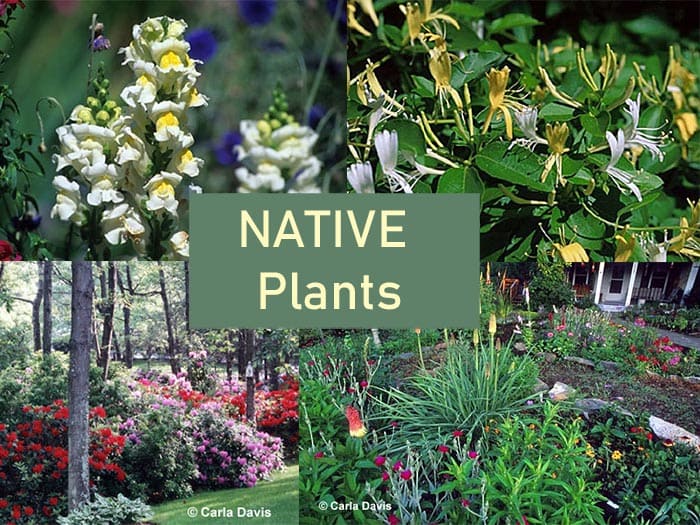
Florida Plants for Wildlife Habitat & Conservation Landscaping
Do you enjoy observing nature…hearing the song of the chickadee…watching hummingbirds fill up on nectar from trumpet vines…listening to the chattering of squirrels…seeing the beauty and grace of a monarch butterfly perched on a milkweed… experiencing the antics of a Mockingbird…the cooing of the Mourning Doves…the swiftness of the Cottontail…and the brilliance of a Cardinal or Baltimore Oriole?
If the answer is “yes”, you’ll probably want to landscape your property for wildlife so you can experience even more from Mother Nature by attracting more wildlife to your property.
Wildlife doesn’t just randomly appear in a given area. It is there because of favorable habitat. The essential elements that you must provide in your habitat are food, water, cover and a place to raise a family. To attract the most wildlife, you need native trees, shrubs, groundcover, vines and wildflowers, many of which will provide food and shelter.
Native or indigenous plants naturally occur in the region in which they evolved. They are adapted to local soil, rainfall and temperature conditions, and have developed natural defenses to many insects and diseases. Because of these traits, native plants will grow with minimal use of water, fertilizers and pesticides. Wildlife species evolve with plants; therefore, they use native plant communities as their habitat. Using native plants helps preserve the balance and beauty of natural ecosystems.
Remember the function served by plants and structures is more important than their appearance. In other words, don’t base your planting decisions solely on what a plant looks like. Following are WindStar Wildlife Institute’s plant recommendations for wildlife habitats in Florida:
Trees in Florida
Tall–Mockernut Hickory, Persimmon, American Beech, American Holly, Black Walnut, Sweet Gum, Black Gum. Red Oak, White Oak, Live Oak, Bald Cypress, Longleaf Pine, Loblolly Pine, Eastern White Pine
Medium/Small–Box Elder, Paw Paw, Flowering Dogwood, Pagoda Dogwood, Carolina False Buckthorn, Winterberry

Doves are very common birds and you can easily spot them when you are in Florida.
Shrubs
Red Buckeye, Prickly Ash, Beauty Berry, Buttonbush, Northern Spicebush, Winged Sumac, Smooth Sumac, Black Elder, Viburnums
Wildflowers
White Snakeroot, Red Columbine, Wild Ginger, Milkweeds, Coreopsis, Blue larkspur, Shooting Star, Joe Pye Weed, Woodland Sunflower, Gayfeather, Cardinal Flower, Wild Lupine, Carolina Phlox, Goldenrod, Wild Asters, Tall Ironweed
Groundcovers
Partridgeberry, Golden Ragwort, Wild Strawberry, Trailing Arbutus
Vines
Peppervine, Crossvine, Trumpet Creeper, Yellow Jessamine, Trumpet honeysuckle, Virginia Creeper, Passionflower
Grasses
Big Bluestem, Bushy Bluestem, Split-beard Bluestem, Broom Sedge, Stalk-grain Sedge, Rice Cut Grass, Switchgrass, LiBlue-eyed Grass
Florida’s landscape includes a wide range of natural communities including: wetlands, flatlands, uplands, rocklands, coastlands and many streams, lakes and ponds.The Florida Native Plant Society can provide lists of plants for a specific region
For more information on improving your wildlife habitat, visit the WindStar Wildlife Institute web site. On the web site, you can also apply to certify your property as a wildlife habitat, register for the “Certified Wildlife Habitat Naturalist e-Learning course, become a member and sign up for the FREE WindStar Wildlife Garden Weekly e-mail newsletter.
See next: Most Popular Birds of Florida

